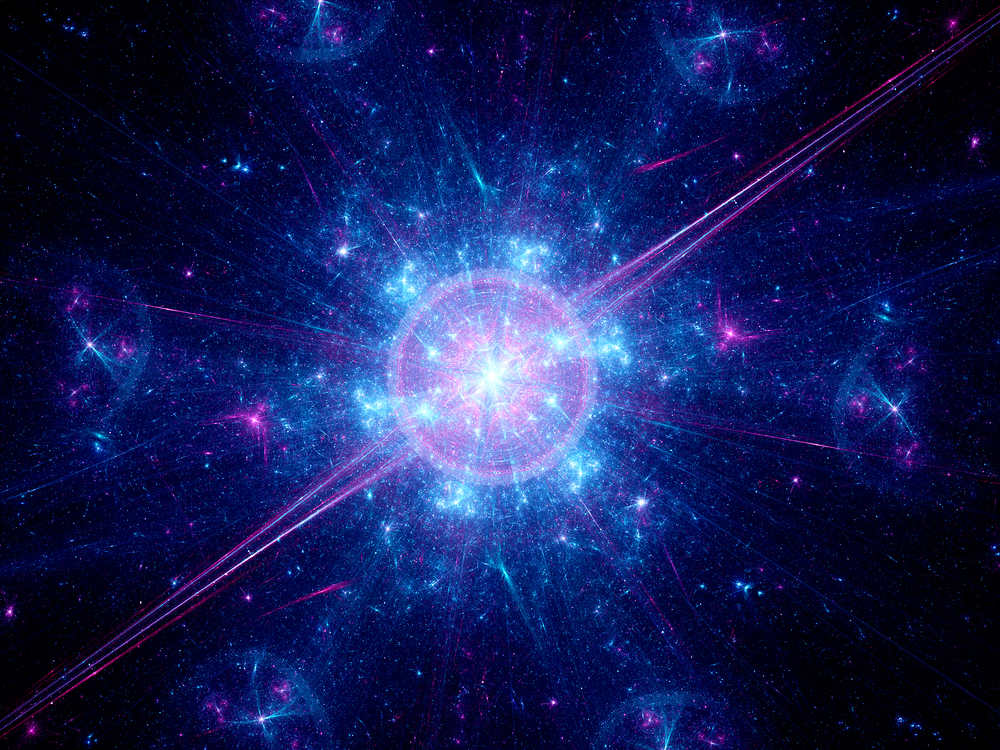
Science and religion are at odds with each other—or at least that’s how it sometimes looks. While most religions are not actually hostile toward scientific disciplines, many evangelical Christians contend that the Big Bang theory is incompatible with a literal reading of the Bible. But a literalist view may be limiting. Reading Genesis’s first chapter yields some interesting points where Genesis and the Big Bang could intersect.
In the Beginning: Genesis and the Big Bang
The Big Bang theory explains that our universe began about 13.8 billion years ago. It was first a super-dense point that was infinitesimally small—as in a million billion billionth the size of one atom. National Geographic maps out how that singularity expanded. At that point, the universe’s four fundamental forces existed as a single unified force: gravity and electromagnetism, plus the strong and weak nuclear forces.
This state lasted literal split seconds—as in 10 to the -43rd power—before flinging matter and energy outward in all directions. San Francisco’s Exploratorium estimates that all this primordial stuff traveled at the speed of light, which is 300 million meters per second. If we could have measured its temperature, it would have been 1,000 trillion degrees Celsius.
Stars, Planets, and Galaxies
Within the first few moments of the Big Bang, elementary particles began to form. Stars formed around 180 million years afterward, thanks to gravity coalescing hydrogen clouds. The first galaxies formed 400 million years after the Big Bang. But our solar system didn’t exist until about nine billion years later. Earth, the Sun, and the other planets are 4.6 billion years old.
The Birth of the Universe, According to Genesis
The Genesis account of our universe’s creation is shared by both the Hebrew Tanakh and most Christian Bibles. Portions of Genesis’s first chapter illustrate the origins of our planet plus the Sun, Moon, and stars. Genesis 1:2-5 narrates day one of creation. The text describes Earth as “being unformed and void” before God sends a wind sweeping over the waters and declares, “Let there be light.” Next, God separates light from darkness, calling the light “day” and the darkness “night.”
The Sun, Moon, and stars don’t appear until day four in this timeline. Verses 14-18 call the Sun and Moon “two great lights,” with the Sun visible by day and the Moon appearing at night. Stars are mentioned in verse 16 along with the Moon, the lesser of the two great lights.
The Sky as a Celestial Dome
Day two in the Genesis timeline mentions an “expanse” separating waters on earth from those just below the heavens. BioLogos explains that the celestial dome of Genesis 1:6-8 reflected how ancient Middle Eastern people saw the sky. Theologian Peter Enns argues that trying to harmonize this view with modern science is problematic at best.
But both Genesis and the Big Bang theory show a beginning in which nothing had solid form. With their geocentric worldview, the ancients reasoned that Earth itself lacked form. Before matter and energy exploded in the Big Bang theory, nothing was solid—not even quarks or leptons, the elementary particles that comprise matter.
Technically, night and day didn’t exist until Earth and the Sun came into being. But Genesis does get another thing right: The Sun, Moon, and stars emerge much later in the narrative. Other “stuff” had to exist first. According to the Big Bang theory, that “stuff” included matter, energy, and forces. Without them, we’d have no Sun, Moon, or stars.
The Coexistence of Faith and Science
Not every scriptural or mythological account has a historical or scientific parallel. While the Genesis timeline doesn’t exactly match scientific concepts like the Big Bang theory, both ideas coincide at a few key points. But such points of intersection can generate much-needed dialogue. Limited thinking can produce clashes between faith and science. But together, they may provide a multifaceted view of reality itself.

